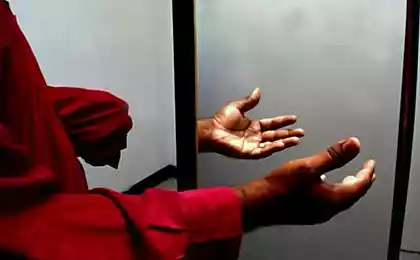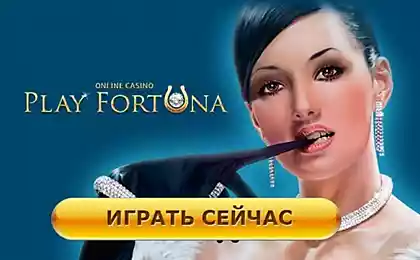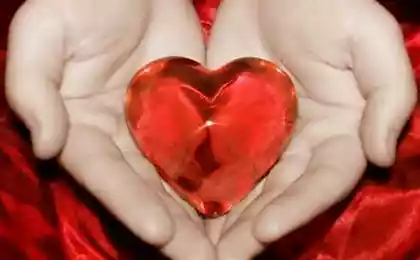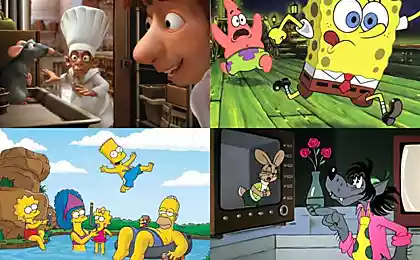2195
Interesting facts about mirrors
1. Mirrors and time travel

We have all heard that time travel is possible via wormholes, is not it? The only trouble is that wormholes are extremely unstable - they are quickly destroyed, so go through them very difficult.
However, the pair of mirrors can solve the problem. All you need - is two uncharged mirror (and fit metal plates) in a vacuum, placed at a distance of a few microns apart. Always make sure that between them there is no external electromagnetic field. Wink Casimir effect - the physical force arising due to quantum field between the mirrors.
This quantum electrodynamic force generates massive negative region of space-time between the mirrors, resulting in a stable wormhole can appear, through which it is theoretically possible to travel at the speed faster than light.
Thus, according to theory, you could take a trip to the past, but the future, unfortunately, remains inaccessible, so find out the winning numbers lottery tickets will not work. There is another fly in the ointment in the ointment - such stable wormhole is infinitely small, so that met my great-grandmother, too, is still difficult.
2. Mirrors, phantom limbs and the human brain

Experiments using mirrors in patients with phantom limb allowed researchers to learn a lot about how the brain works. Scientists placed a mirror on the table vertically, and between them reflected the whole limb of the patient - for example, the hand. Reflection intact hands superimposed on the side of the phantom limb, so that the patient in this case it seems that he sees both hands - and a whole and no.
Sounds scary, but when a man sees his hands, he feels his phantom arm moves, even if he lost her ten years ago or more. When his whole hand touch, it feels to the touch and the phantom hand. After several repetitions of the procedure, patients felt that their phantom limb disappeared.
Scientists believe that the effect is due to the brain's plasticity - how the brain creates new neural pathways after the loss of a limb. Also, scientists believe that between sight and touch in the brain there is a very close relationship.
3. Mirrors cause hallucinations

When you look in the mirror, you may have a strange illusion. Try it yourself: Sit in a dark room in front of the mirror about a meter away from him and look at his face for ten minutes. The room should be as dark as possible, so that in this case you could clearly see his reflection.
First you will notice how your face in the mirror a little distorted. Gradually reflection will change faster, will be more like a mask - there feeling that the face in the mirror is not yours. Some people see the faces of strangers, fantastic monsters or animal faces.
Scientists believe that this experiment can help us better understand ourselves. Some psychologists believe that the method is suitable for the treatment of schizophrenia - so patients face with his other "I».
4. Do all recognize themselves in the mirror?

Recognize themselves in a mirror - quite naturally: at least that is how most people will say, however, take the test on a mirror capable samoopoznanie not everyone. Scientists put on the face or body of the test label to determine whether a person recognizes himself in the mirror - if so, it will likely try to erase the mark. Children, for example, begin to recognize themselves in the mirror at the age of only 24 months.
However, when the researchers tested the children from countries such as Kenya or Fiji, you were surprised - six years old children to pass this test could not. But this is not a sign that they are not able to mentally separate yourself from other people. Most likely, the problem of cultural differences in children, usually froze in front of his own reflection - it proves that they knew exactly what they see themselves, not someone else.
5. Animals that can recognize themselves in a mirror

So many people mirror test samoopoznanie not pass. The same applies to most animals - but not all. Could this mean that some animals are able to recognize his own reflection? Scientists believe that, yes.
For example, elephants, being in front of a mirror, erasing a mark on his head did not, but made known obvious signs samoopoznaniya - performed a series of repetitive movements. Perhaps some animals just do not care about the presence of extraneous markings on their body, so they do not react to them.
Gorillas test markings are also not as people. However, gorillas easily confused: eye contact in the community of gorillas is extremely important, so that after they handled themselves in the mirror, they are, as a rule, try to retire and even then erase the markings that were previously seen in the mirror. So it is now considered that the gorillas can recognize themselves in the mirror.
Perhaps the fact that the test marks are not effective for most species, so many species, perhaps, have a much more developed consciousness than we think. Mirror test is also able to pass the chimpanzee, orangutans, bonobos, dolphins, killer whales and European magpies.
6. The mirrors on the moon

Distance from us to the Moon is about 384,403 miles, and we were able to find it through mirrors. The distance from the Earth to the Moon is constantly changing due to the fact that the Moon rotates around the planet in an elliptical orbit. Distance from the nearest point of the orbit of the Moon to the Earth, known as perigee - only 363,104 km and apogee, the farthest point, this distance is 406,696 km.
Astronauts program "Apollo" established on the moon corner reflector, which was used to calculate the distance from Earth to the Moon. Corner reflector - a special type of mirror, reflecting the laser beam back in the direction from which it came. These laser beams are sent to the moon with the help of huge telescopes on Earth, and their reflected light allows scientists to calculate the distance to the moon to within three centimeters.
Corner reflectors have also increased our knowledge of the Moon. For example, they provided information about the lunar orbit, and now we know that each year the satellite is moving away from the Earth by about 3 to 8 cm. These data have even been used to test Einstein's theory of relativity.
7. Mirrors can reflect sound
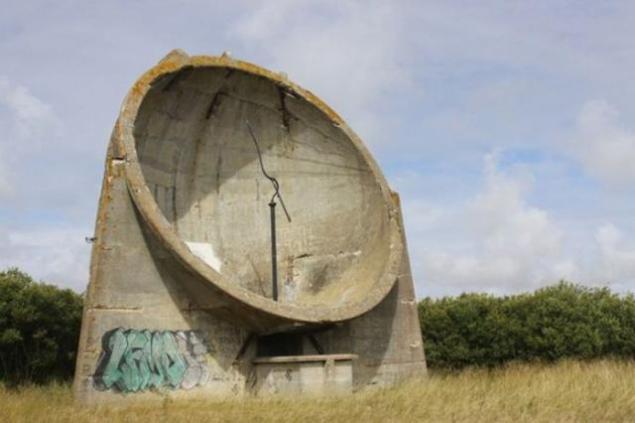
Mirror reflecting sound waves, known as acoustic mirrors. They were used in the UK during World War II for the detection of specific sound waves coming from enemy aircraft. This was before the advent of radar.
These mirrors were built around the coast of the UK, the most famous of them are still standing in Dengue, Kent. Just because you can not approach them, access is limited - you can only see a mirror on a special excursion.
The only thing in the world of acoustic mirror outside of the UK are located in the Maktab, Malta. This is one of the largest of these mirrors in the world - its diameter is about 61-meters. The local dialect is also called a mirror «Il widna», which means "ear". Location of "Chowder" is not a secret, but free access to it is closed.
8. Mirrors reflect matter

Surprisingly, there is a mirror that can reflect the matter - are known in physics as atomic mirror. Atomic mirror reflects the atoms of matter in the same way as an ordinary mirror reflects light. To reflect the neutral atoms are used electromagnetic fields, although some mirrors used ordinary silicon water.
Reflection from the atomic mirror - is essentially quantum reflection of de Broglie waves. It works for the reflection of neutral atoms that move slowly such atoms mostly repelled from the surface of the mirror. Property can be used to capture the slow atoms or atomic beam focusing. Work better ribbed atomic mirrors thanks longer wavelength compared with substance minute photons of light.
9. Truthful Mirror

What the mirror shows your face is "inverted" - is a myth, not your reflection is upside down, what do you see - this is the left side of your face to the left of the mirror and the right side to the right; and therefore creates the illusion that your reflection is upside down.
Nevertheless, there is a so-called irreversible, or truthful mirror - it allows a person to see themselves in the mirror, just as it is seen by other people. The first such mirrors are used for applying makeup.
Truthful Mirror easily create at home: just put two ordinary mirrors perpendicular to each other and look at her reflection from the association: a truthful mirror will give you a 3D-image that is moving in the same way as you, and not flat, as in a normal mirror .
10. Mirrors separated light beams
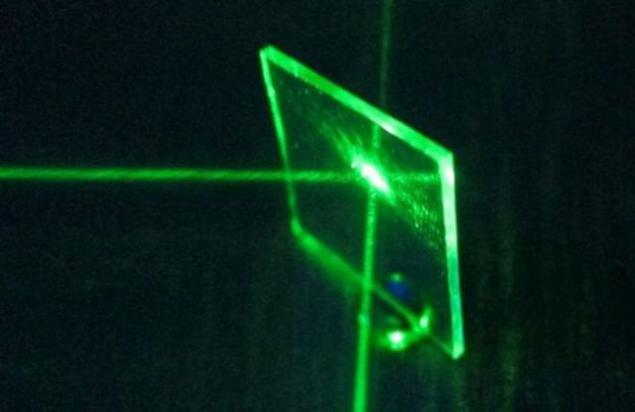
Mirrors can not only reflect light, sound and matter - they can also divide the light rays. Mirrors are used in many beamsplitters and most scientific devices, including telescopes. Standard beamsplitter is a cube made of two glass prisms on one basis. When light rays fall on the beam splitter, half of them continue on the same path, and the other half is reflected at an angle of 90 °.
From here

We have all heard that time travel is possible via wormholes, is not it? The only trouble is that wormholes are extremely unstable - they are quickly destroyed, so go through them very difficult.
However, the pair of mirrors can solve the problem. All you need - is two uncharged mirror (and fit metal plates) in a vacuum, placed at a distance of a few microns apart. Always make sure that between them there is no external electromagnetic field. Wink Casimir effect - the physical force arising due to quantum field between the mirrors.
This quantum electrodynamic force generates massive negative region of space-time between the mirrors, resulting in a stable wormhole can appear, through which it is theoretically possible to travel at the speed faster than light.
Thus, according to theory, you could take a trip to the past, but the future, unfortunately, remains inaccessible, so find out the winning numbers lottery tickets will not work. There is another fly in the ointment in the ointment - such stable wormhole is infinitely small, so that met my great-grandmother, too, is still difficult.
2. Mirrors, phantom limbs and the human brain

Experiments using mirrors in patients with phantom limb allowed researchers to learn a lot about how the brain works. Scientists placed a mirror on the table vertically, and between them reflected the whole limb of the patient - for example, the hand. Reflection intact hands superimposed on the side of the phantom limb, so that the patient in this case it seems that he sees both hands - and a whole and no.
Sounds scary, but when a man sees his hands, he feels his phantom arm moves, even if he lost her ten years ago or more. When his whole hand touch, it feels to the touch and the phantom hand. After several repetitions of the procedure, patients felt that their phantom limb disappeared.
Scientists believe that the effect is due to the brain's plasticity - how the brain creates new neural pathways after the loss of a limb. Also, scientists believe that between sight and touch in the brain there is a very close relationship.
3. Mirrors cause hallucinations

When you look in the mirror, you may have a strange illusion. Try it yourself: Sit in a dark room in front of the mirror about a meter away from him and look at his face for ten minutes. The room should be as dark as possible, so that in this case you could clearly see his reflection.
First you will notice how your face in the mirror a little distorted. Gradually reflection will change faster, will be more like a mask - there feeling that the face in the mirror is not yours. Some people see the faces of strangers, fantastic monsters or animal faces.
Scientists believe that this experiment can help us better understand ourselves. Some psychologists believe that the method is suitable for the treatment of schizophrenia - so patients face with his other "I».
4. Do all recognize themselves in the mirror?

Recognize themselves in a mirror - quite naturally: at least that is how most people will say, however, take the test on a mirror capable samoopoznanie not everyone. Scientists put on the face or body of the test label to determine whether a person recognizes himself in the mirror - if so, it will likely try to erase the mark. Children, for example, begin to recognize themselves in the mirror at the age of only 24 months.
However, when the researchers tested the children from countries such as Kenya or Fiji, you were surprised - six years old children to pass this test could not. But this is not a sign that they are not able to mentally separate yourself from other people. Most likely, the problem of cultural differences in children, usually froze in front of his own reflection - it proves that they knew exactly what they see themselves, not someone else.
5. Animals that can recognize themselves in a mirror

So many people mirror test samoopoznanie not pass. The same applies to most animals - but not all. Could this mean that some animals are able to recognize his own reflection? Scientists believe that, yes.
For example, elephants, being in front of a mirror, erasing a mark on his head did not, but made known obvious signs samoopoznaniya - performed a series of repetitive movements. Perhaps some animals just do not care about the presence of extraneous markings on their body, so they do not react to them.
Gorillas test markings are also not as people. However, gorillas easily confused: eye contact in the community of gorillas is extremely important, so that after they handled themselves in the mirror, they are, as a rule, try to retire and even then erase the markings that were previously seen in the mirror. So it is now considered that the gorillas can recognize themselves in the mirror.
Perhaps the fact that the test marks are not effective for most species, so many species, perhaps, have a much more developed consciousness than we think. Mirror test is also able to pass the chimpanzee, orangutans, bonobos, dolphins, killer whales and European magpies.
6. The mirrors on the moon

Distance from us to the Moon is about 384,403 miles, and we were able to find it through mirrors. The distance from the Earth to the Moon is constantly changing due to the fact that the Moon rotates around the planet in an elliptical orbit. Distance from the nearest point of the orbit of the Moon to the Earth, known as perigee - only 363,104 km and apogee, the farthest point, this distance is 406,696 km.
Astronauts program "Apollo" established on the moon corner reflector, which was used to calculate the distance from Earth to the Moon. Corner reflector - a special type of mirror, reflecting the laser beam back in the direction from which it came. These laser beams are sent to the moon with the help of huge telescopes on Earth, and their reflected light allows scientists to calculate the distance to the moon to within three centimeters.
Corner reflectors have also increased our knowledge of the Moon. For example, they provided information about the lunar orbit, and now we know that each year the satellite is moving away from the Earth by about 3 to 8 cm. These data have even been used to test Einstein's theory of relativity.
7. Mirrors can reflect sound

Mirror reflecting sound waves, known as acoustic mirrors. They were used in the UK during World War II for the detection of specific sound waves coming from enemy aircraft. This was before the advent of radar.
These mirrors were built around the coast of the UK, the most famous of them are still standing in Dengue, Kent. Just because you can not approach them, access is limited - you can only see a mirror on a special excursion.
The only thing in the world of acoustic mirror outside of the UK are located in the Maktab, Malta. This is one of the largest of these mirrors in the world - its diameter is about 61-meters. The local dialect is also called a mirror «Il widna», which means "ear". Location of "Chowder" is not a secret, but free access to it is closed.
8. Mirrors reflect matter

Surprisingly, there is a mirror that can reflect the matter - are known in physics as atomic mirror. Atomic mirror reflects the atoms of matter in the same way as an ordinary mirror reflects light. To reflect the neutral atoms are used electromagnetic fields, although some mirrors used ordinary silicon water.
Reflection from the atomic mirror - is essentially quantum reflection of de Broglie waves. It works for the reflection of neutral atoms that move slowly such atoms mostly repelled from the surface of the mirror. Property can be used to capture the slow atoms or atomic beam focusing. Work better ribbed atomic mirrors thanks longer wavelength compared with substance minute photons of light.
9. Truthful Mirror

What the mirror shows your face is "inverted" - is a myth, not your reflection is upside down, what do you see - this is the left side of your face to the left of the mirror and the right side to the right; and therefore creates the illusion that your reflection is upside down.
Nevertheless, there is a so-called irreversible, or truthful mirror - it allows a person to see themselves in the mirror, just as it is seen by other people. The first such mirrors are used for applying makeup.
Truthful Mirror easily create at home: just put two ordinary mirrors perpendicular to each other and look at her reflection from the association: a truthful mirror will give you a 3D-image that is moving in the same way as you, and not flat, as in a normal mirror .
10. Mirrors separated light beams

Mirrors can not only reflect light, sound and matter - they can also divide the light rays. Mirrors are used in many beamsplitters and most scientific devices, including telescopes. Standard beamsplitter is a cube made of two glass prisms on one basis. When light rays fall on the beam splitter, half of them continue on the same path, and the other half is reflected at an angle of 90 °.
From here



